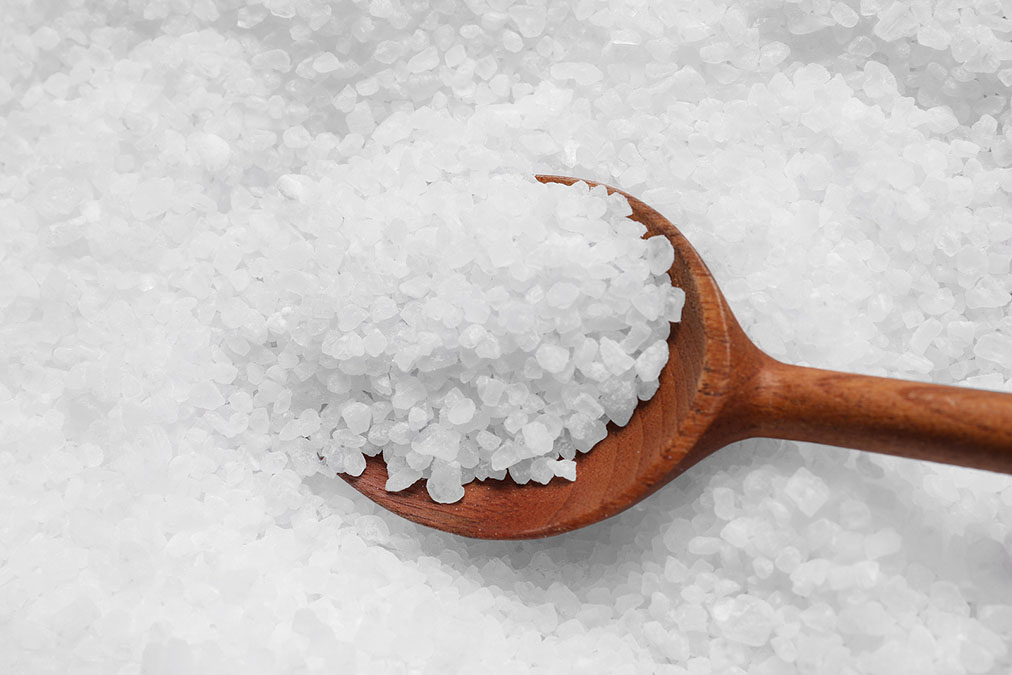 Non-alcoholic fatty liver disease (NAFLD) is on the rise, and it doesn’t seem to be slowing down.
Non-alcoholic fatty liver disease (NAFLD) is on the rise, and it doesn’t seem to be slowing down.
It seems clear that it’s caused by something we’re doing differently now than 20–30 years ago.
A new study in the Journal of Clinical Medicine reveals that this something is a common mineral that most people consume on a daily basis.
A team from the University of Groningen in the Netherlands analyzed previously collected data on 6,132 subjects.
They looked at the results of sodium urine tests that were carried out periodically for 48 hours over two consecutive 24-hour periods. From this, they were able to analyze the subject’s sodium intake.
They also used the fatty liver index and hepatic steatosis index and found that 31.6 percent of the participants had fatty liver index scores of 60 or more.
People with scores higher than 60 were more likely to have metabolic syndrome, diabetes, high blood pressure, and a history of cardiovascular disease.
They also had higher amounts of sodium in their urine —163.63 Mmol (millimoles) per 24 hours versus the 136.76 Mmol in people whose fatty liver index scores were below 60.
People with non-alcoholic liver disease were 54 percent more likely to be high sodium consumers compared to those with healthy livers.
So why do people who consume a lot of sodium have this fatty liver risk?
Two words: insulin resistance!
Sodium is hard to avoid these days, as it exists in so many manufactured foods to preserve shelf life. Therefore, it’s best to stick to fresh organic foods and avoid foods such as canned items, deli meats, bottled sauces, and pre-prepared meals.
The Institute of Medicine recommends that adults consume no more than 1.5 grams of salt per day. Very active athletes or outdoor workers who lose a lot of salt through sweat can consume more.

 Overcoming IBD
Overcoming IBD Multiple Sclerosis
Multiple Sclerosis Banishing Bronchitis
Banishing Bronchitis Gum Disease Gone
Gum Disease Gone Overcoming Onychomycosis
Overcoming Onychomycosis Neuropathy No More
Neuropathy No More The Prostate Protocol
The Prostate Protocol Brain Booster
Brain Booster
 Ironbound
Ironbound
 Solution for Shingles
Solution for Shingles
 The Bone Density Solution
The Bone Density Solution
 The Ultimate Healing Protocol
The Ultimate Healing Protocol
 The Parkinson's Protocol
The Parkinson's Protocol
 The Chronic Kidney Disease Solution
The Chronic Kidney Disease Solution
 Overthrowing Anxiety
Overthrowing Anxiety The Fatty Liver Solution
The Fatty Liver Solution The Hypothyroidism Solution
The Hypothyroidism Solution
 The End of Gout
The End of Gout The Blood Pressure Program
The Blood Pressure Program
 The Oxigized Cholesterol Strategy
The Oxigized Cholesterol Strategy
 Stop Snoring And Sleep Apnea Program
Stop Snoring And Sleep Apnea Program
 The Arthritis Strategy
The Arthritis Strategy The Vertigo & Dizziness Program
The Vertigo & Dizziness Program The 3-Step Diabetes Strategy
The 3-Step Diabetes Strategy Hemorrhoids Healing Protocol
Hemorrhoids Healing Protocol The Erectile Dysfunction Master
The Erectile Dysfunction Master Weight Loss Breeze
Weight Loss Breeze The IBS Program
The IBS Program The Insomnia Program
The Insomnia Program The Migraine and Headache Program
The Migraine and Headache Program The Neck Pain Solution
The Neck Pain Solution The Menopause Solution
The Menopause Solution The Ejaculation Master
The Ejaculation Master The TMJ Solution
The TMJ Solution The Acid Reflux Solution
The Acid Reflux Solution The Fibromyalgia Solution
The Fibromyalgia Solution The Psoriasis Strategy
The Psoriasis Strategy